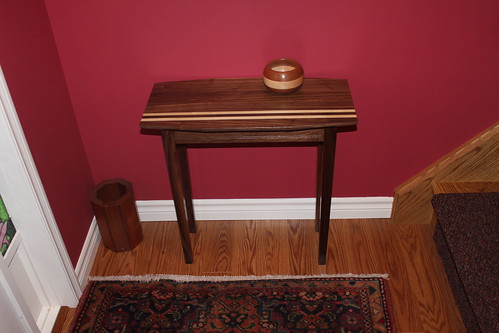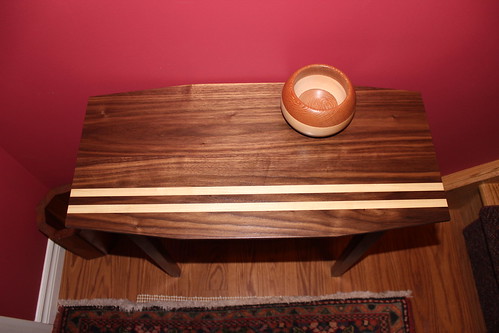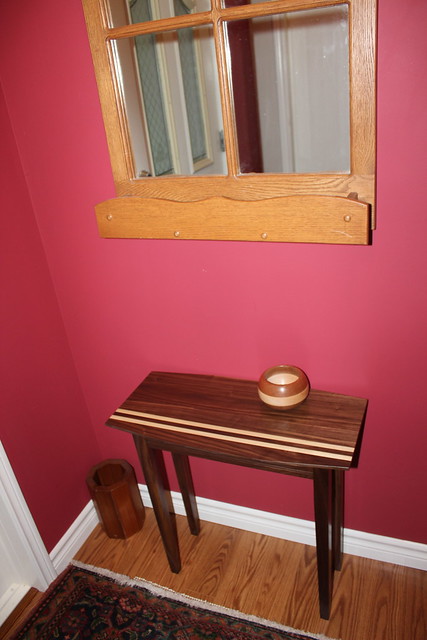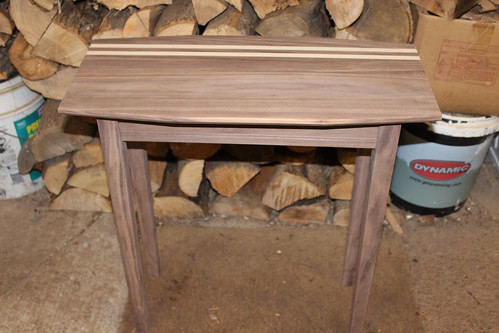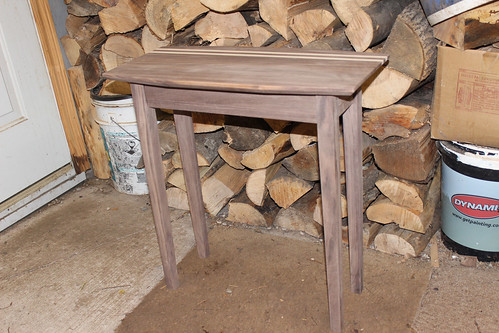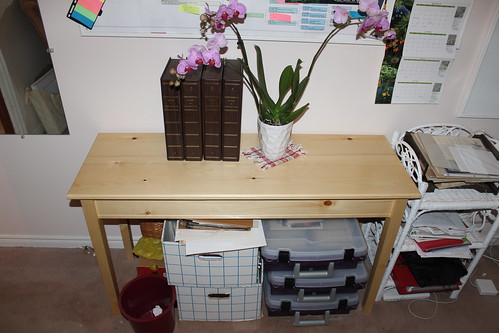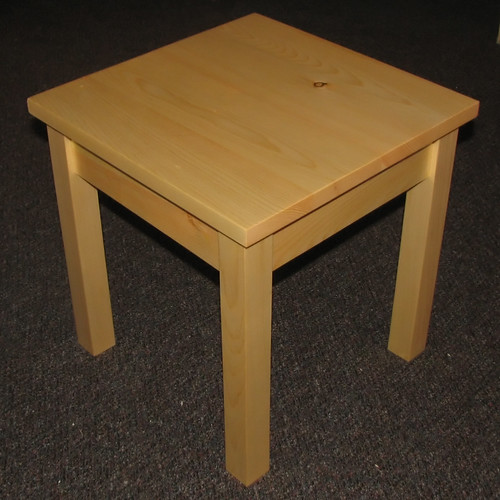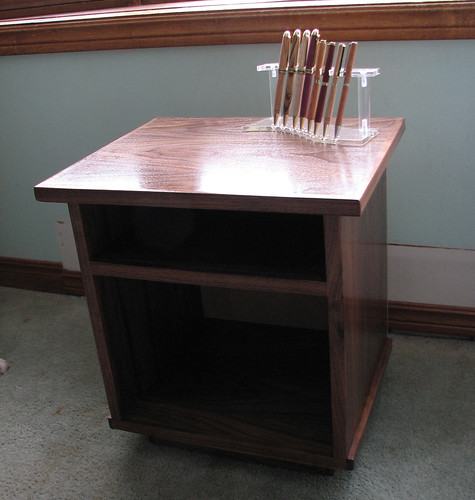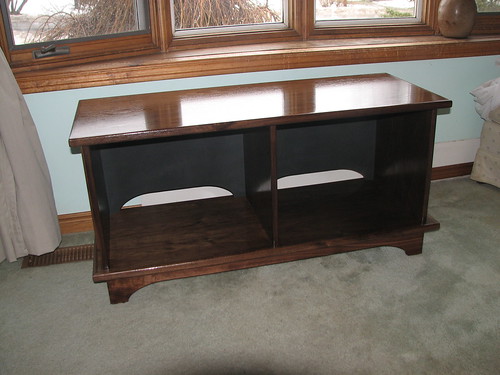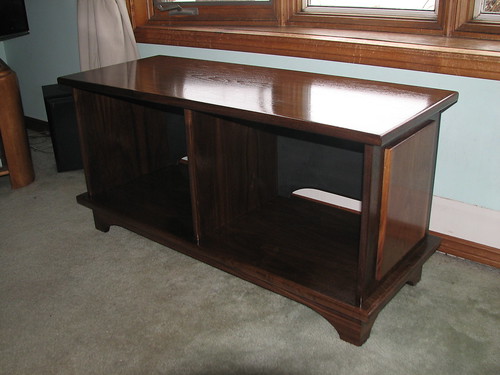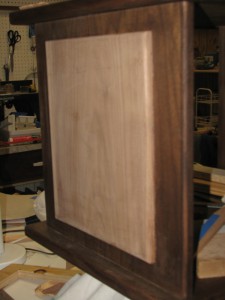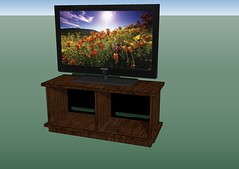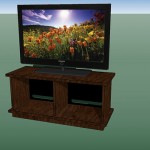 Before I could continue working on the much anticipated TV stand (see artist’s rendering) I knew I had to make something else first. Not as a distraction or delaying tactic, though you might be forgiven for immediately suspecting that, but as a necessary step towards completing the project. I needed to build a miter sled. The exposed edges of the walnut-veneered particle board are to be covered with solid walnut trim pieces, which I have mostly milled and ready to cut to length. (Still deciding on final profile, I will probably do the round-over at the router table while I still can…
Before I could continue working on the much anticipated TV stand (see artist’s rendering) I knew I had to make something else first. Not as a distraction or delaying tactic, though you might be forgiven for immediately suspecting that, but as a necessary step towards completing the project. I needed to build a miter sled. The exposed edges of the walnut-veneered particle board are to be covered with solid walnut trim pieces, which I have mostly milled and ready to cut to length. (Still deciding on final profile, I will probably do the round-over at the router table while I still can…
The idea of the miter sled is to allow the cutting of these trim pieces with sufficient accuracy that they will not show any gaps at the 45-degree joints at the corners. This is difficult using the standard table-saw miter guage.
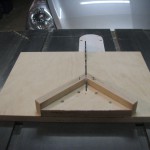 The first photo shows the finished sled, in place on the table saw. I used Baltic Birch Plywood for all the parts, because I just love the stuff and it’s perfect for this kind of thing. I only use Home Despot plywood for catching glue drips, or similar demeaning tasks that are all it’s good for…
The first photo shows the finished sled, in place on the table saw. I used Baltic Birch Plywood for all the parts, because I just love the stuff and it’s perfect for this kind of thing. I only use Home Despot plywood for catching glue drips, or similar demeaning tasks that are all it’s good for…
The eagle-eyed will have noticed that my outfeed table is actually my wife’s Honda Fit. It’s at a bit of an awkward angle, but in its defense it does get great gas mileage…
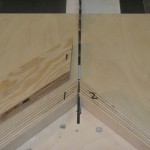 The reason for the numbers is as follows: rather than depend on the angle being a perfect 45 degrees, which is difficult to find in real life and prone to inaccuracy, the sled depends on the two angles being part of a perfect 90 degrees, which is found all over the shop… In this case, the factory corner of a piece of Baltic Birch Plywood (accept no substitutes) was found to be a perfect ninety, and formed the pointy bit on the sled, the bit with the very attractive visible screws. So long as you cut one half of the joint on one side, and the other half on the other side, you KNOW it’s going to add up to that perfect ninety. Or at least, I HOPED it would.
The reason for the numbers is as follows: rather than depend on the angle being a perfect 45 degrees, which is difficult to find in real life and prone to inaccuracy, the sled depends on the two angles being part of a perfect 90 degrees, which is found all over the shop… In this case, the factory corner of a piece of Baltic Birch Plywood (accept no substitutes) was found to be a perfect ninety, and formed the pointy bit on the sled, the bit with the very attractive visible screws. So long as you cut one half of the joint on one side, and the other half on the other side, you KNOW it’s going to add up to that perfect ninety. Or at least, I HOPED it would.
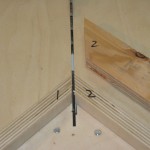 So I tested by cutting a piece of scrap (expendable Home Despot crappy plywood as it turns out) in half, then mitering one half on side #1 (left) and then the other half on side #2 (right). These should result in a perfect ninety-degree corner with no gaps.
So I tested by cutting a piece of scrap (expendable Home Despot crappy plywood as it turns out) in half, then mitering one half on side #1 (left) and then the other half on side #2 (right). These should result in a perfect ninety-degree corner with no gaps.

Yay! Looks like it worked! Okay, no excuses, gotta get that trim glued on… Well, after I mill it to final profile…
